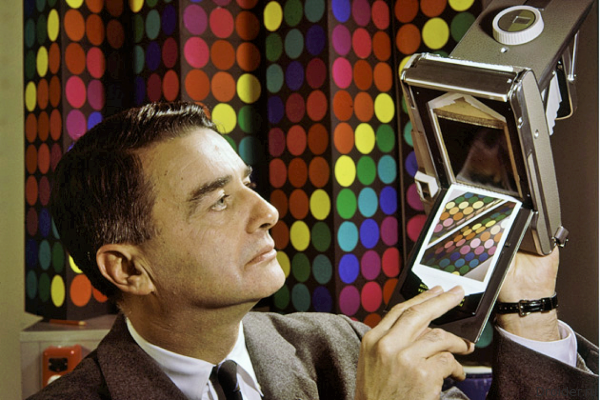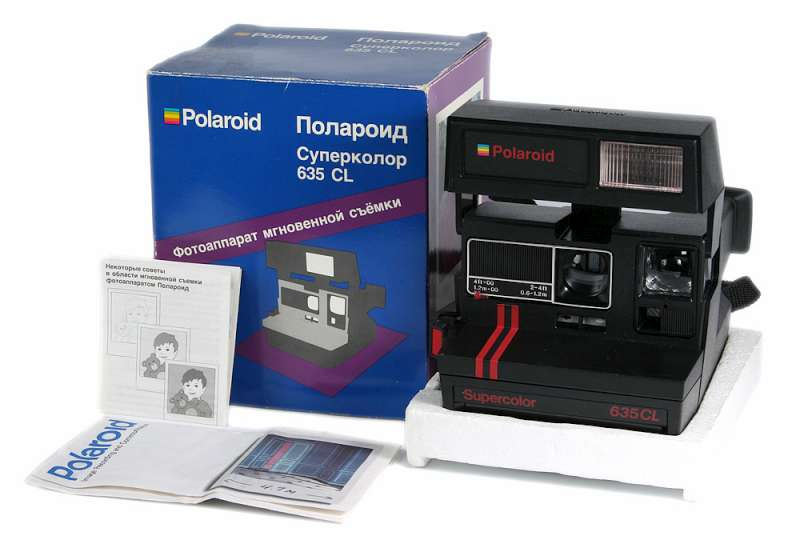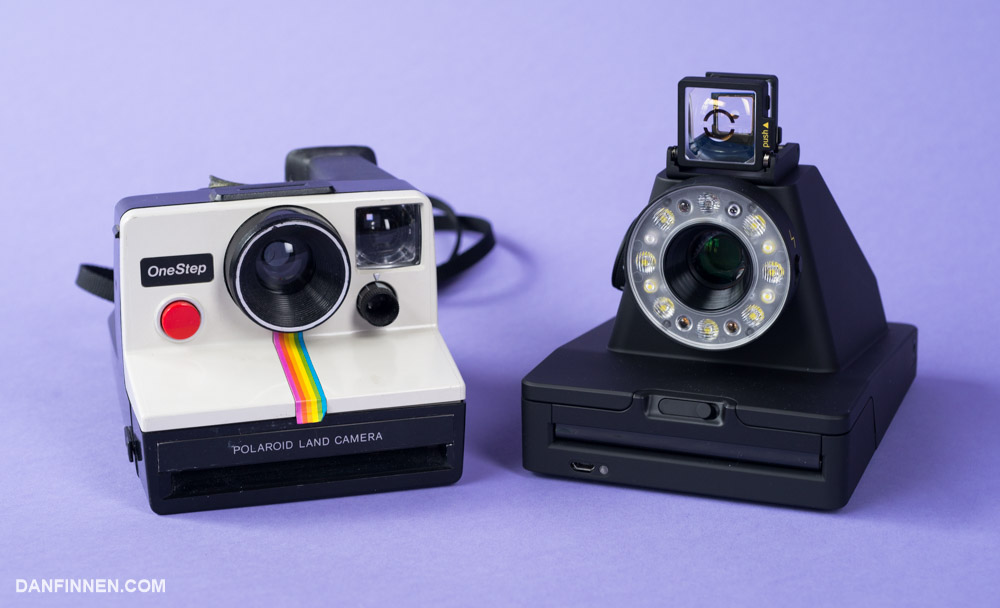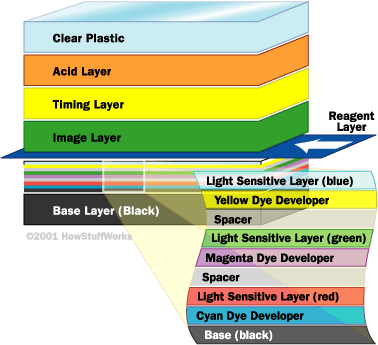
Instant photo can now take any smartphone. A couple of touches and somewhere in another city mom knows that you ate. But despite this, the hands are drawn to the good old Polaroids, who give out a real analog photo with a pleasant screech.
Interest in retro touched all areas. This is largely due to the fact that people born in the eighties and nineties now have reached the age of "the grass was greener before," and they want to return to the things that once left memories for life. These people are solvent today, and marketing sharks cannot miss such a chance. But as for those born in two thousand and nostalgic for the times in which they never lived ... Well, psychologists say that this is normal.
But there is something else here. Many changes imposed by technology companies unduly supplanted their ancestors. As the candybar killed the clamshell, so the figure supplanted the analog photo into the fetishist caste. But there are prerequisites for the return of fashion to an instant photo, especially in the general flow of fashion to retro.
On such a favorable wave, it was announced the revival of the company Polaroid Originals
, which stopped its activities in 2008 year. Entrepreneurs who believed in the possibility of returning a part of past glory to Polaroid say that in today's digital world the demand for real things that exist beyond the narrow scope of a smartphone is growing. Austin Cleon in the book “Steal as an artist” described ten lessons of creativity, one of which dealt specifically with the opposition of analogue and number.
Austin says: "work with your hands."
It is important for the human brain to get the result of its work. When an artist creates in an intangible space, the creative charge can quickly run out. This problem has yet to be solved by evangelicals of virtual and augmented reality.
Story

The Polaroid company was founded by Edwin Land, a grandson of Russian émigrés and a Harvard graduate, in 1937. Basically, the company produced goods with a polarizing coating: sunglasses, table lamps, and others. During the Second World War, the company produced a number of products for the American army, including infrared night vision devices, gun sights and vectographs. But cameras for instant photos were released only 11 years later in 1948.
One day in 1943, during a holiday in Santa Fe, Land’s three-year-old daughter Jennifer wondered why you couldn’t see the photo right after it was taken. It was this naive child question that became the starting point in Land's work on a new type of film. Later, Land recalled that he laid out in his head all the conditions and components necessary for the implementation of the technology within an hour. It was then that he decided to engage in the development of instant photography. It took five years to get a patent and implement the idea.
From 1943 to 1946, the development of the instant camera Polaroid was kept strictly confidential. One of the main problems was the strength of the cassette: to get to the end customer, she had to make her way from the conveyor, through warehouses, trucks, shops, bags and numerous crooked hands, without cracking or spoiling her blow or pressing. Not to mention temperature differences and other factors.
But the solution was found and on February 21, 1947, the first camera for instant photography was presented. And in the 48th year, the first commercial model “Model 95” arrived in the central department of Boston, which was able to take only pictures in gray shades and had an important limitation: it was necessary to wait exactly 60 seconds before removing the layer of negative from the photo. Despite the fact that the quality of the camera did not exceed the already existing systems, and the photographer was extremely attentive, the buyers were satisfied. The first batch was sold out in minutes.

A truly contrasting black and white (and not gray-gray) Polaroid film came out two years later in 1950. The transition to black and white color required additional manual soaking of the developed image using a polymer coating to prevent darkening of the photo. And already in 1957, the New York Times called an instant photo equal in quality to the best works that came out of ordinary development rooms.
Despite the unprecedented popularity of the instant camera, Land did not believe in marketing. He said that marketing is needed for obviously bad goods. His approach was this: you need to show people something new and unnecessary up to this point so that by the end of the demonstration, they will irresistibly want to get this product. Therefore, he turned the annual meetings in the Polaroid company into a kind of show. Land climbed onto the stage, showed a new camera, talked about its capabilities. And by the end of the meeting, the audience simply dreamed of getting such a camera.
You may have noticed some similarities with the presentation of Apple products here. Steve Jobs followed the development of the Polaroid company in his youth, and once even confirmed that Apple is based on the same business model. In the seventies and early eighties, he visited the headquarters of Polaroid several times to talk with Land.
Polaroid production in the USSR

Polaroid cameras were assembled in the USSR, and then in Russia. In the 1980s, during one of his business trips to the United States, Soviet nuclear physicist, Vice President of the USSR Academy of Sciences, Academician Yevgeny Velihov, at one of the meetings, met the then president of the company, Polaroid Macalister Buff, and suggested that he establish joint production in the USSR.
So, in 1989, at the initiative of the USSR Academy of Sciences, a joint venture Svetozor was organized, which over the next ten years produced the Supercolor 635CL and 636 Closeup models. These models did not differ functionally and had differences only in the form of the body. Production began with just a dozen pieces and two master assemblers, the equipment was put on the conveyor, but at first there was no one to work. Two people alternately changed operations from assembly to testing.
It was originally planned to release 350,000 cameras within six years, but five years later, the company reported that production reached two hundred thousand cameras a year. But even this was not enough, because the sales of the Polaroids collected in the West on the territory of the former USSR were down to one million units a year, not counting the parties produced by Svetozor.
By the way, not all components for assembly were delivered from abroad. For example, an electronic flash control unit was produced at the Obninsk Signal plant, which was the only one, apart from factories in Malaysia and Scotland, where they produced electronics for Polaroid.
Our days, Impossible Project
In 2001, Polaroid declared bankruptcy twice and was resold three times. It seemed that the Polaroid era was over. But still there were enthusiasts who showed interest in outdated photos. And in 2009, the last Polaroid plant was bought by three entrepreneurs and was named The Impossible Project. It can still be called experimental, but the project already has many supporters and admirers. And here it is worth remembering another phrase by Edwin Land: “You shouldn’t do what everyone can do.”

Thanks to Impossible Project, in 2017, for the first time in a long time, a new camera came out with the familiar “Polaroid” inscription. It is called OneStep 2. The camera takes instant photos, it has a timer, flash and USB port for charging. OneStep 2 is not yet on sale, but is available for pre-order. The camera uses I-Tape film, which was originally created for the original camera Impossible Project I-1.
In the period from 2008, various companies could obtain a license to use a patent for Polaroid technology. But in 2017, the parent company Impossible Project repurchased all Polaroid patents, as well as all intellectual property rights. What does all of this mean? This means that soon it will be possible to buy a new Polaroid camera for only $ 99.
Technology
The desire of Land's daughter required not only the creation of a new type of film, but also a camera with a different photo production mechanism. The main element of the system was a film cassette containing both the negative and the receiving layer of the positive, connected by a reservoir with reagents (including sodium hydroxide) for development. This tank was called a cocoon. At the exit from the chamber, a pair of rollers at the base of the chamber squeezed the film, destroying the tank wall, after which the reagent spread over the image area. As the reagents spread, the chemicals removed the unclaimed silver halide from the negative, then removed it to a layer of positive in a smaller amount, creating the final image. And to this day the process has not changed significantly.

Outside the picture is protected by a transparent film.
Below - fixative.
Below that is the buffer layer. It delays the penetration of fixative substances while the reaction with the reagent is lower.
Next is the receiving layer of paper, where the final positive image of the dyes from the lower layers is formed.
Under it is a reagent.
The six following layers are alternating emulsion layers and layers with developing paint.
Three emulsion layers are sensitive to red, green and blue. They work as negatives for layers of cyan, magenta, and yellow (or, in more usual terms, cyan, magenta, and yellow), depriving those of the ability to transfer to paper. For example, a photo of a blue sky will affect the blue emulsion, which will block all the yellow paint under it, which will allow the magenta and cyan layers to go to the surface of the positive, forming a blue color.
Roller
In the format of the article, I prepared this story of Polaroid for Giktames, but initially we made a video that I left below. It features an offscreen text with historical and technical illustrations, as well as a slightly more advanced script.